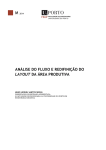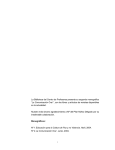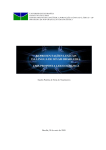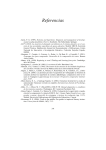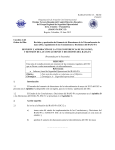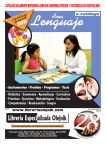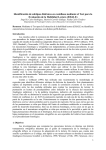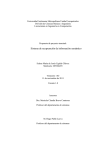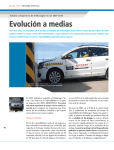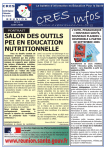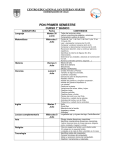Download Orthographic lexicon and reading skills in young
Transcript
This article was downloaded by: [190.64.49.12] On: 05 December 2014, At: 03:01 Publisher: Routledge Informa Ltd Registered in England and Wales Registered Number: 1072954 Registered office: Mortimer House, 37-41 Mortimer Street, London W1T 3JH, UK Estudios de Psicología: Studies in Psychology Publication details, including instructions for authors and subscription information: http://www.tandfonline.com/loi/redp20 Orthographic lexicon and reading skills in young Spanish speaking readers / Léxico ortográfico y habilidad lectora en jóvenes lectores hispanoparlantes a Ariel Cuadro & Daniel Costa a a Universidad Católica del Uruguay Published online: 02 Dec 2014. To cite this article: Ariel Cuadro & Daniel Costa (2014): Orthographic lexicon and reading skills in young Spanish speaking readers / Léxico ortográfico y habilidad lectora en jóvenes lectores hispanoparlantes, Estudios de Psicología: Studies in Psychology, DOI: 10.1080/02109395.2014.965457 To link to this article: http://dx.doi.org/10.1080/02109395.2014.965457 PLEASE SCROLL DOWN FOR ARTICLE Taylor & Francis makes every effort to ensure the accuracy of all the information (the “Content”) contained in the publications on our platform. However, Taylor & Francis, our agents, and our licensors make no representations or warranties whatsoever as to the accuracy, completeness, or suitability for any purpose of the Content. Any opinions and views expressed in this publication are the opinions and views of the authors, and are not the views of or endorsed by Taylor & Francis. The accuracy of the Content should not be relied upon and should be independently verified with primary sources of information. Taylor and Francis shall not be liable for any losses, actions, claims, proceedings, demands, costs, expenses, damages, and other liabilities whatsoever or howsoever caused arising directly or indirectly in connection with, in relation to or arising out of the use of the Content. This article may be used for research, teaching, and private study purposes. Any substantial or systematic reproduction, redistribution, reselling, loan, sub-licensing, systematic supply, or distribution in any form to anyone is expressly forbidden. Terms & Downloaded by [190.64.49.12] at 03:01 05 December 2014 Conditions of access and use can be found at http://www.tandfonline.com/page/termsand-conditions Estudios de Psicología / Studies in Psychology, 2014 http://dx.doi.org/10.1080/02109395.2014.965457 Orthographic lexicon and reading skills in young Spanish speaking readers / Léxico ortográfico y habilidad lectora en jóvenes lectores hispanoparlantes Ariel Cuadro and Daniel Costa Universidad Católica del Uruguay Downloaded by [190.64.49.12] at 03:01 05 December 2014 (Received 18 December 2013; accepted 4 June 2014) Abstract: This study analyses the relationship between orthographic processing and reading skills in Spanish speaking children, taking into account school experience and different reading levels, focusing on aspects of orthographic ambiguity, frequency, semantics and efficiency in written word recognition. Lexical orthographic processing assessment measures, decoding and lexical-semantic representations for reading ability were used in a sample of 1070 years 2 to 6 primary school students. Results showed the significant contribution orthographic lexicon makes to reading proficiency in Spanish, as well as the impact students years’ experience in reading practice has on specializing and refining orthographic lexicon, particularly in words with ambiguous spelling. These results are discussed in the context of orthographic transparency and interdependence between the mechanisms of grapho-phonological and orthographic-lexical word recognition. Keywords: reading; orthographic; orthography; reading achievement Resumen: En este estudio se analiza la relación del procesamiento ortográfico y la habilidad lectora en jóvenes hispanoparlantes, a través de la escolaridad y en diferentes niveles lectores, atendiendo a los aspectos de ambigüedad ortográfica, frecuencia, semántica y eficiencia en el reconocimiento de la palabra escrita. En una muestra de 1070 estudiantes de 2° a 6° de educación primaria se utilizaron medidas de evaluación lexical del procesamiento ortográfico, de decodificación y de representaciones léxico-semánticas para la habilidad lectora. Los resultados dan muestra de la importante contribución del léxico ortográfico a la competencia lectora en español, así como la incidencia de los años de práctica lectora para la especialización y afinado del léxico ortográfico, en particular en palabras con ambigüedades ortográficas. Se discuten estos resultados en el marco de la transparencia ortográfica y de la interdependencia entre los mecanismos de reconocimiento de palabras grafo-fonológicas y ortográfico-lexicales. English version: pp. 1–11 / Versión en español: pp. 12–21 References / Referencias: pp. 21–22 Translated from Spanish / Traducción del español: Liza D’Arcy Authors’ Address / Correspondencia con los autores: Ariel Cuadro, Facultad de Psicología, Universidad Católica del Uruguay, Av. 8 de Octubre 2738, CP 11600 Montevideo, Uruguay. E-mail: [email protected] © 2014 Fundacion Infancia y Aprendizaje 2 A. Cuadro and D. Costa Downloaded by [190.64.49.12] at 03:01 05 December 2014 Palabras clave: lectura; ortografía; transparencia ortográfica; aprendizaje de la lectura The learning objective of reading for students is to acquire an orthographic system that provides them reliable, fast and effective access to the meaning of words (Nation, 2009). During the identification process of the written word, mastery and automation of the grapheme phoneme transformation rules are required, mechanisms which assign phonological sequences to orthographic sequences that are subsequently assembled into a word. In turn, these mechanisms enable a progressive development of orthographic lexicon, which stores representations of written words that can then be directly identified with little cognitive effort (Perfetti, 1992). Evidence on the relationship between orthographic processing and reading ability has accumulated over the years, and research has sought to understand the nature of that relationship (Deacon, Benere, & Castles, 2012). Effective readers intensively use access to orthographic information stored in orthographic lexicon (Share, 1995). Other mechanisms such as direct instruction and context also contribute to the development of orthographic knowledge. Just as the number of encounters with the written word influence the process of identification, the size of the subject’s orthographic vocabulary will affect their actual selection of the word (Lété & Fayol, 2013). As the orthographic recognition system develops and the amount of representations increases, the orthographic processing system becomes more specialized and the activation of a target word is reduced by inhibition of neighbouring words (Castles, Datta, Gayan, & Olson, 1999). The meaning of words would facilitate access to the orthographic lexicon, when decoding a word with a known meaning the connection between the orthographic forms of words and their meaning is reinforced (Perfetti, 2010). Deacon et al. (2012) analysed the directionality of the relationship between orthographic processing and reading skills. The results from a longitudinal study that included 100 children in year 1 through to year 3 using lexical and sublexical assessment tasks revealed the predictive value of early reading skills on the orthographic processing from both year 1 to year 2 and year 2 to year 3. The question of whether orthographic transparency influences the use of orthographic processing during reading acquisition has been asked by several authors (Katz & Frost, 1992; Mc Kague, Davis, Pratt, & Johnston, 2008). In the most transparent systems the grapheme-phoneme conversion would seem to suffice for access to the pronunciation of the word, which does not occur in opaque languages where it is necessary to have specific information related to each word. Thus one could assume that the simplicity of the orthographic code facilitates orthographic knowledge and even results in a more rapid development of orthographic lexicon in transparent languages than in opaque systems during similar periods. Downloaded by [190.64.49.12] at 03:01 05 December 2014 Orthographic lexicon and reading skills / Léxico ortográfico y habilidad lectora 3 When Lété and Fayol (2013) evaluated French students from years 3 to 5, adults and people with dyslexia who were at a year 3 reading level, they noted that orthographic lexicon specializes at a slower rate in transparent languages than in opaque ones. To the extent that the grapho-phonological analysis mechanism is successful in early reading acquisition, it seems that an effect that is less sensitive to the orthographic features of words is generated, requiring a considerable amount of exposure to the written word before acquiring orthographic knowledge (Share, 2004). As such, ambiguities in lexicalizations in an orthographic system such as Spanish would require from the subject a higher level of analysis in order to achieve an autonomous orthographic lexicon, as they could find phonologically existing words that are orthographically non-existent (station/stashion). In English, the substitution of a grapheme changes the phonology of the word, so the error is detected because the non-word does not exist rather than because of its difference with an existing one. There are also specific orthographic factors related to the nature of orthography conversion rules in phonology that interfere with the generation of such knowledge (Katz & Frost, 2001; Marín, Cuadro, & Pagán, 2007). There are consonant graphemes that can represent more than one phoneme, such as grapheme c, which makes the words siento (feel) and ciento (hundred) homophones in Spanish. Therefore a particular complexity of the Spanish writing system is its inconsistency. An example of this is the case where a phoneme can be represented by a series of graphemes and the subject has no phonological information to select the corresponding grapheme, they depend on specific orthographic representations stored in their lexicon to identify the word. In a study on the orthographic development of Spanish schoolchildren, Defior, Jiménez-Fernández, and Serrano (2009) found that some of the phoneme-grapheme conversion complex rules that are dependent on context and position are acquired quickly and at an early age by children, while there is a more gradual progress in the mastery of inconsistent words. Sánchez, Diuk, Borzone, and Ferroni (2009) analysed the interaction between phonological and orthographic knowledge in Spanish. The conclusions they obtained were that lexical mechanisms are acquired relatively late and gradually. Thus although orthographic transparencies facilitate learning of the graphemephoneme correspondence and with it phonological processing, the acquisition of orthographic representations for fast and autonomous visual recognition in languages such as Spanish, with a significant number of orthographic ambiguities, requires a greater specialization at an orthographic processing level, successful decoding is not sufficient. This would seem to be especially true for those individuals who have difficulties in acquiring literacy. The effects of Spanish orthographic properties on the ability to read have theoretical implications and implications for educational practices in regard to understanding the acquisition of orthographic representations. In this study we focus on the development of orthographic processing and its relationship with the ability to read in Spanish during school and at different reading levels, specifically 4 A. Cuadro and D. Costa Downloaded by [190.64.49.12] at 03:01 05 December 2014 focusing on aspects of orthographic ambiguity, frequency, semantics and efficiency (quick recall that uses low resources in identifying a word). For this, lexical orthographic processing assessment measures, decoding and lexicalsemantic representations for reading ability were used. Method Participants The sample consisted of 1070 students in years 2 to 6 (ages 7–13), 493 female and 577 male, from 10 schools in the city of Montevideo from different socioeconomic levels. Students were distributed by academic year as follows: 213 from year 2, 218 from year 3, 277 from year 4, 213 from year 5 and 209 from year 6. These academic years represent children who have already begun to read and write and who have different levels of experiences and practice in reading. Instruments Prueba de Eficacia Lectora (TECLE) (Test of Word Reading Efficiency [TOWRE]) (Cuadro, Costa, Trías, & Ponce, 2009). This test assesses reading ability by evaluating phonological, orthographic and semantic/syntactic aspects. The analysis of differential item functioning (DIF) yielded results of at least 6% of the items with slightly suspicion DIF (Costa Ball, Palombo, & Cuadro, 2011). Prueba de Eficacia Ortográfica (TEO) (Test of Orthographic Efficiency [TSE]) The test consists of 100 items formed by pairs of words/non-words that are homophones (e.g., station/stashion), where the student being evaluated must choose the correctly spelled word within three minutes. For the preparation of the test, studies in our context by Carbonell and Tuana (1978), who selected a list of words that were regularly misspelled and frequently used at school, were taken as a reference. Thus words were chosen that contain alternating graphemes b and v to represent the phoneme /b/, and graphemes j and g to represent the sound /j/, words that can be written with ll or y, words containing the grapheme h, which have no phoneme, and graphemes that represent the sound /s/. Words with the grapheme x were not considered, since no sound of the Spanish language corresponds to this grapheme, it is mainly represented by the sequence /k+s/ (Real Academia Española, 2011). Words with the grapheme z were also removed, since there is no difference in pronunciation between the sounds /z/ and /s/ in Uruguayan Spanish; most Spanish speakers from Uruguay pronounce the phoneme /z/ as /s/. (Real Academia Española, 2011). Given its frequency, words containing ce-ci were selected, and no difficult orthography was substituted for the same sound. Carbonell and Tuana (1978) suggest that the most usual orthographic difficulties that arise are the syllables ce and ci (c or s). 23.23% of the words registered in LEXESP (Léxico Informatizado del Español [Computerized Spanish Lexicon]) (Sebastián, Martí, Carreiras, & Cuetos, 2000) contain ambiguity in the transcription of the phoneme /s/. Orthographic lexicon and reading skills / Léxico ortográfico y habilidad lectora 5 Downloaded by [190.64.49.12] at 03:01 05 December 2014 Table 1 shows the list of words of which, according to the Frequency of Spanish words dictionary (Martínez & García, 2004), 40% are high frequency (> 500), another 40% are medium frequency (100–500) and 20% are low frequency (< 100). Psychometric analysis studies on content validity (r = .66), item analysis, dimensionality and reliability (test-retest reliability of .76), provided evidence of the validity of a unidimensional test structure (Costa Ball, Gründel, & Cuadro, 2011). Procedure Once the consent of schools and families was collected the tests were administered in school hours. We proceeded to a joint reading of the instructions and at the same time three example items were carried out collectively, explaining in each case what the correct answer was. Results A criterion based on percentiles per year for different reading levels was established: low, average and high, based on the TECLE test. Students who were below the 15th percentile were considered to have a low reading level, those who scored above the 75th percentile were considered to have a high reading level and the rest were considered average. Table 2 shows the means and standard deviations for each of the school years and reading levels in the TECLE and TEO tests, which constitute the data set that underwent analysis. For the correlations between the reading efficiency test (TECLE) and orthographic efficiency test (TEO), the Pearson correlation coefficients were found with raw scores obtained from subjects in the different tests. Significant differences (p = .000) among the three groups of reading levels and each school year in both tests were seen (Table 3). We ran a one-way ANOVA to analyse the variability of the orthographic lexicon development from one year to another in the different reading levels. The assumptions of independence, homoscedasticity and normality of the data had been previously studied. Scores on the three levels of the variable reading level are independent. To study the homoscedasticity the Levene statistic was used; the critical level is p < .05 at all three levels of the variable reading level so the variances of the variable TEO are not equal for groups defined by the variable year. Finally, the Kolmogorov-Smirnov test was used for a sample, to analyse the normality, and as p > .05 in low and average levels of the variable reading level, the scores obtained with the TEO Test fit a normal distribution in two of the three levels of the variable studied. In the high reading level, it was found that in years 2, 5 and 6 the critical level is p < .05. The Games-Howell statistic would then be used, which assumes that the variances are different. We segmented the file with the variable reading level and selected the variable orthographic lexicon (TEO) as the dependent variable and the variable year as factor, also selecting the post hoc comparisons through the Games-Howell arriba (up) vacaciones (holidays) felicitar (congratulate) conocimiento (knowledge) página (page) libro (book) entonces (then) problema (problem) sábado (saturday) fácil (easy) verano (summer) haber (have) llegar (arrive) situación (situation) trabajo (work) selva (jungle) ejemplo (example) silencio (silence) verdura (vegetables) edificio (building) educación (education) primavera (spring) decir (say) colegio (school) resolver (resolve) cenar (dine) bañar (bathe) vestido (dress) invitar (invite) natación (swimming) crecer (grow) gracias (thank you) visitar (visit) bien (fine) noticias (news) nube (cloud) ahora (now) playa (beach) libre (free) nombre (name) hombre (man) ventana (window) fábrica (factory) volver (return) yo (me) levantar (lift) abrazar (embrace) voz (voice) conocer (know) sombra (shadow) Table 1. Words that are included in the TEO test. solución (solution) hojas (leaves) aparecer (appear) quince (fifteen) helado (ice-cream) biscocho (sponge cake) mayor (greater) emoción (emotion) percioso (beautiful) varios (various) vaso (glass) once (eleven) bueno (good) abeja (bee) arbol (tree) amanecer (dawn) cambiar (change) abril (april) nueve (nine) barrio (neighbourhood) dirección (address) febrero (february) almacén (warehouse) vida (life) cocina (kitchen) amable (friendly) receta (recipe) llover (rain) también (also) aburrido (boring) energía (energy) vecino (neighbour) favorito (favourite) hallar (find) mover (move) cuidad (city) abierto (open) llorar (cry) atención (attention) ayer (yesterday) nube (cloud) canción (song) cine (cinema) blanco (white) agradecer (appreciate) ejercicio (exercise) humano (human) humo (smoke) bosque (forest) imaginar (imagine) Downloaded by [190.64.49.12] at 03:01 05 December 2014 6 A. Cuadro and D. Costa TECLE TEO TECLE TEO TECLE TEO TECLE TEO TECLE TEO Year 2 Year 6 Year 5 Year 4 Year 3 Test Year 4.52 8.83 9.81 14.00 12.08 22.04 15.97 31.81 20.52 39.52 M SD 2.13 7.27 2.72 7.00 2.88 11.73 4.89 16.86 4.84 21.07 Low (N = 186) M 2.86 7.75 3.32 11.50 4.26 16.44 5.80 17.55 4.68 15.87 SD Average (N = 500) Reading level 12.36 15.90 18.73 25.28 23.70 36.63 32.22 56.81 37.49 69.32 Table 2. Results of TECLE and TEO tests by academic year and reading level. Downloaded by [190.64.49.12] at 03:01 05 December 2014 25.61 35.72 33.34 50.17 40.99 67.40 48.11 87.39 53.33 92.89 M SD 7.78 22.15 3.32 18.88 6.89 17.52 6.12 13.76 5.67 9.25 High (N = 384) Orthographic lexicon and reading skills / Léxico ortográfico y habilidad lectora 7 8 A. Cuadro and D. Costa Table 3. Correlation coefficient between reading proficiency and orthographic lexicon, by academic year and reading level. N Reading proficiency/orthographic lexicon 213 218 217 213 209 .80** .82** .79** .83** .84** 186 500 384 .66** .86** .85** Downloaded by [190.64.49.12] at 03:01 05 December 2014 Category Academic Year Year 2 Year 3 Year 4 Year 5 Year 6 Reading level Low Average High Note: ** p < .01. Table 4. Summary of the one-way ANOVA analysis to study the effect of reading level in the variable orthographic lexicon. Source Low reading level Among groups Inter-group Total Average reading level Among groups Total inter-group Total High reading level Among groups Total inter-group Total df SS MS F 4 179 183 23867.82 31176.95 55044.77 5966.95 174.17 34.25*** 4 490 494 188115.96 96608.00 284723.96 47028.99 197.15 238.53*** 4 374 378 157460.43 97354.13 254814.55 39365.10 260.30 151.22*** Note: *** p < .000. procedure. ANOVA results within the three levels of reading levels can be seen in Table 4. Table 5 provides a classification of groups based on the relationship between their mean in the variable orthographic lexicon (TEO). Thus within the low reading level, scores from years 2 and 3 that do not differ between themselves (p < .05) are included in subgroup 1, scores from year 3 that do not differ from years 2, 3 and 4 (p > .05) are included in subgroup 2, but the latter differs from year 2 (p < .01) and years 5 and 6 (p < .04). Years 5 and 6 that do not differ between themselves (p > .05), but do differ from the rest (p < .04) are also Orthographic lexicon and reading skills / Léxico ortográfico y habilidad lectora 9 Table 5. Post hoc comparisons in orthographic lexicon according to reading level. Orthographic lexicon variable score (TEO) Reading level Year 2 M SD Year 3 M SD Year 4 Year 5 Year 6 M M M SD SD Downloaded by [190.64.49.12] at 03:01 05 December 2014 Low 8.8 7.2 14.0 7.00 22.0 11.7 31.8 16.8 39.5 Average 15.9 7.7 25.2 11.5 36.6 16.4 56.8 17.5 69.3 High 35.7 22.1 50.1 18.8 67.40 17.5 87.3 13.7 92.8 SD Post hoc 21.0 2.3 = 4 < 5.6 15.8 2 < 3 < 4 < 5 < 6 9.2 2 < 3 < 4 < 5.6 included. The average reading level is made up of five subgroups that all differ between each other. Finally, the high reading level is made up of four subgroups, in which years 5 and 6 do not differ between themselves (p < .05), but in turn do differ from the rest; year 4 only differs from the lower years as does year 3. Finally, we used the binary logistic regression analysis to predict the values of a dichotomous dependent variable (students with low effective reading ability and students with no difficulty) from a quantitative independent variable (orthographic lexicon test score). This procedure helps identify the characteristics that differentiate the two groups (low RL high RL), generating predictions that help differentiate between students belonging to one group or another. By segmenting the database with the variable year and applying the binary logistic regression analysis we found that the p value associated with the Wald statistic is less than .05 in the variable orthographic lexicon in all years. We can estimate that the proportion of subjects with low reading efficiency (TECLE) decreases when scores in orthographic lexicon (TEO) increase. Thus for students in year 2 who have a negative coefficient B = −0.163 and a likelihood ratio of 0.849, having a poor reading efficiency decreases by 15% (1 - 0.849 = 0.15), in the third year it decreases by 18%, by 9% in the fourth, by 9.1% in the fifth and by 9.3% in the sixth. If instead of a point we establish a five-point increase interval, the reason for this interval being at e5ð0:163Þ ¼ –0.44 in the TEO, in year 2 the advantage of reading above the low reading efficiency band decreases by 66%, 61% in year three, 37% in year four, and 38% in years five and six. Discussion When studying orthographic processing, the ways in which it is evaluated must be considered (Deacon et al., 2012). On the one hand we have a lexicon level assessment of the type used in this study, where the traditional pseudohomophones choice task is used, that is, the correct choice between two phonologically possible alternatives must be made (Olson, Forsberg, & Wise, 1994). On the other hand we have the sub-lexical assessment that focuses on the regularity of letter patterns characteristic of a particular writing system, where the most plausible Downloaded by [190.64.49.12] at 03:01 05 December 2014 10 A. Cuadro and D. Costa representation must be chosen between the presentation of two pseudowords (Perfetti, 1984). For Burt (2006) assessment tasks at an orthographic processing lexical level are very similar to measures used to predict the reading of words level, so what might be occurring is that the reading of words is being predicted through the reading of words. In any case Deacon et al. (2012) found a significant correlation between reading experience and performance in both lexical and sublexical tasks. Our results confirm that in all reading levels orthographic lexicon gradually increases and that the differences between reading levels in the development of orthographic lexicon are maintained and even increase throughout schooling. The correlation between reading proficiency and orthographic lexicon is very high (between .79 and .86) in all years. Spanish speaking students that have a greater orthographic lexicon are faster and more accurate in reading than those who do not. The binary logistic regression analysis shows that when there is an increase in the variable orthographic lexicon there is less possibility of having a low reading efficiency level; the same, but more marked, is true for year 2 and year 3 students. Therefore reading literacy in Spanish-speaking relies heavily on the development of the orthographic lexicon, as opposed to formulations such as those developed by Katz and Frost (1992) which show that in more transparent systems there is minimum use of orthographic processing mechanisms for recognizing written words. An analysis of orthographic lexicon development from reading levels reveals that very good year 2 readers obtained the same scores on tests as low-level year 6 readers. That group moves on to the subsequent academic years with more than enough cognitive resources to venture into a higher level of analysis, to such an extent that in year 5 they achieve very high levels of accuracy in the orthographic efficient test (TEO) and do not differ significantly from year 6 students. Defior et al. (2009) analysed the development and acquisition of lexical knowledge considering different complexities in the Spanish writing system (among them the grapheme-phoneme inconsistency) in a sample of 208 primary school students from Spain, and found a significant development in the lexical knowledge of year 2 students and a gradual increase throughout the following years. Readers at an average and high level between years 4 and 5 show most variability (20 points) in their orthographic lexicon development compared to other academic years. Thus in year 5 they achieved higher levels of expertise and refined their orthographic lexicon, enabling them to successfully identify words with heterographic homophony substitutions as required by the TEO test. They are phonologically existing and orthographically non-existing words, thereby increasing the degree of opacity in the language (Perry, Ziegler, & Coltheart, 2002). In Spanish orthographic lexicon specialization would be slow (Lété & Fayol, 2013; Sánchez et al., 2009), ambiguities in the lexicalizations require higher levels of analysis for the achievement of an autonomous orthographic lexicon. Castells (2007) has also noted that in English an orthographic lexicon specialization that detects the substitution of a phoneme begins in year 5. But these studies are made Downloaded by [190.64.49.12] at 03:01 05 December 2014 Orthographic lexicon and reading skills / Léxico ortográfico y habilidad lectora 11 based on the replacement of a word by a non-word, so the error is detected because the non-word does not exist rather than rather than because of the orthographic structure itself. Low-level readers do not show significant differences in orthographic lexicon development between year 2 and year 3. There is no significant change in year 4 and again they do not make significant progress between years 5 and 6. They need nearly two years to reach a statistically significant improvement. This suggests a difficulty in accessing orthographic lexicon, especially in words with ambiguous spelling. Spanish has a significant number of these ambiguities and in some cases, such as in Uruguay, high frequency inconsistent phonemes (e.g., /s/). The nature of the correspondence between orthography and phonology would influence the development of the orthographic lexicon and the quality and accuracy of its representations, particularly in languages with a significant number of orthographic ambiguities. The explanation of this phenomenon cannot be addressed from the correlational data of this study, but a possible explanation could be that outlined by Lété and Fayol (2013), that the successful implementation of the grapheme-phoneme correspondence rules generates a lower sensitivity to the orthographic features of words. Educational implications arise from this study upon ratification of the importance of intervening heavily in the word recognition process, with an explicit focus of learning the specific orthographic properties of the language from early years of schooling, if the objective is to train efficient, accurate and fast readers. Likewise, a specialized intervention is needed for those that demonstrate reading difficulties at an early stage, as the differences between average and good readers are maintained throughout schooling. 12 A. Cuadro and D. Costa Downloaded by [190.64.49.12] at 03:01 05 December 2014 Léxico ortográfico y habilidad lectora en jóvenes lectores hispanoparlantes El objetivo del aprendizaje de la lectura es que los alumnos adquieran un sistema ortográfico tal, que habilite el acceso al significado de las palabras de manera confiable, rápida y efectiva desde la ortografía (Nation, 2009). En ese proceso de identificación de la palabra escrita se requiere el dominio y la automatización de las reglas de transformación grafema fonema, mecanismo por el cual se atribuyen secuencias fonológicas a secuencias ortográficas que se ensamblan en una palabra. Este mecanismo a su vez permite desarrollar progresivamente un léxico ortográfico, que almacena representaciones de las palabras escritas, las que luego podrán ser identificadas en forma directa y a un bajo costo cognitivo (Perfetti, 1992). A lo largo de los años se ha ido acumulado evidencia sobre la relación entre el procesamiento ortográfico y la habilidad lectora e incluso se ha buscado comprender la naturaleza de esa relación (Deacon, Benere, y Castles, 2012). Los lectores eficaces utilizan intensivamente el acceso a la información ortográfica almacenada en el léxico ortográfico (Share, 1995). Otros mecanismos tales como la instrucción directa y el contexto también hacen aportaciones al desarrollo del conocimiento ortográfico. Del mismo modo que el número de encuentros con la palabra escrita incidirá sobre el proceso de identificación, el tamaño del vocabulario ortográfico del sujeto afectará la selección efectiva de la palabra (Lété y Fayol, 2013). A medida que el sistema de reconocimiento ortográfico se va desarrollando y la cantidad de representaciones es mayor, el sistema de procesamiento ortográfico se especializa y la activación de una palabra objetivo se reduce por la inhibición de las palabras vecinas (Castles Datta, Gayan, y Olson, 1999). El significado de las palabras facilitaría la entrada al léxico ortográfico; al decodificar una palabra con significado conocido, se refuerza la conexión entre la forma ortográfica de las palabras y su significado (Perfetti, 2010). Deacon et al. (2012) se propusieron analizar la direccionalidad en la relación existente entre el procesamiento ortográfico y la habilidad lectora. Los resultados obtenidos a partir de un estudio longitudinal con 100 niños de primero a tercer grado escolar, utilizando tareas de evaluación lexical y sublexical, revelan el carácter predictivo de las habilidades tempranas de lectura de palabras sobre el procesamiento ortográfico tanto de 1° año a 2° como de 2° a 3° año. La pregunta si la trasparencia ortográfica incidiría en el uso del procesamiento ortográfico durante la adquisición de la lectura se la han planteado varios autores (Katz y Frost, 1992; Mc Kague, Davis, Pratt, y Johnston, 2008). En los sistemas Downloaded by [190.64.49.12] at 03:01 05 December 2014 Orthographic lexicon and reading skills / Léxico ortográfico y habilidad lectora 13 más transparentes el uso de la conversión grafema fonema parecería ser suficiente para acceder a la pronunciación de la palabra, lo que no ocurriría en lenguas opacas en las que se hace necesario disponer de información específica relacionada con cada palabra. De esta forma se podría asumir que la sencillez del código ortográfico facilitaría el conocimiento ortográfico, provocando incluso que en períodos similares, el desarrollo del léxico ortográfico en lenguas trasparentes sea más acelerado que en sistemas opacos. Lété y Fayol (2013) evaluando a escolares franceses de 3ro y 5to grado, adultos y disléxicos con nivel lector equivalente a tercer año escolar, observaron que el léxico ortográfico se especializa más lentamente en las lenguas transparentes que en la opacas. En la medida en que el mecanismo de análisis grafofonológico resulta exitoso en los inicios de la adquisición de la lectura, parecería generarse un efecto de menor sensibilidad ante las características ortográficas de las palabras, requiriendo de una cantidad considerable de exposición a la palabra escrita antes de adquirir su conocimiento ortográfico (Share, 2004). Siendo así, las ambigüedades en las lexicalizaciones, en un sistema ortográfico como el español, exigirían al sujeto un nivel de análisis superior para el logro de un léxico ortográfico autónomo; en tanto puede encontrarse con palabras existentes fonológicamente pero inexistentes ortográficamente (cielo/sielo). En inglés la sustitución de un grafema cambia la fonología de la palabra, por lo que el error se detecta por la inexistencia de la no palabra, más que por la diferencia con una existente. Existen asimismo factores ortográficos específicos, relacionados con la naturaleza de las reglas de conversión de la ortografía en fonología que interfieren en la generación de dicho conocimiento (Katz y Frost, 2001, Marín, Cuadro, y Pagán, 2007). Hay grafemas consonánticos que pueden representar más de un fonema, como es el caso del grafema c, que hace que en nuestros países por ejemplo las palabras siento y ciento sean homófonas. Por ello una complejidad particular del sistema de escritura en español es la inconsistencia, que se refiere a los casos en los cuales un fonema puede ser representado por una serie de grafemas y el sujeto no cuenta con información fonológica para seleccionar el grafema correspondiente; debiendo contar con la representación ortográfica específica almacenada en su lexicón para lograr identificar la palabra. Defior, Jiménez-Fernández, y Serrano (2009), a partir de un estudio del desarrollo ortográfico de escolares españoles, indican que algunas reglas complejas de conversión fonema-grafema, dependientes del contexto y de la posición, son adquiridas rápidamente y a una edad temprana por los niños, mientras se observa un progreso más gradual en relación al dominio de las palabras inconsistentes. Sánchez, Diuk, Borzone, y Ferroni (2009) analizaron la interacción entre el conocimiento fonológico y ortográfico en español. Las conclusiones que obtienen son que los mecanismos léxicos son relativamente tardíos y se adquieren en forma gradual. De esta forma si bien la trasparencias ortográfica facilitaría el aprendizaje de la correspondencia grafema-fonema y con ello el procesamiento fonológico; la Downloaded by [190.64.49.12] at 03:01 05 December 2014 14 A. Cuadro and D. Costa adquisición de las representaciones ortográficas para el reconocimiento visual rápido y autónomo en lenguas como el español, con un número significativo de ambigüedades ortográficas, requeriría de una mayor especialización a nivel del procesamiento ortográfico; no siendo suficiente la decodificación exitosa. Esto parecería darse en especial para aquellos sujetos que presentan dificultades en la adquisición del la lectoescritura. Los efectos de las propiedades ortográficas de nuestra lengua en la habilidad lectora, tienen implicaciones teóricas y para las prácticas educativas, en lo que hace a la comprensión de la adquisición de las representaciones ortográficas. En este trabajo estudiamos el desarrollo del procesamiento ortográfico y su relación con la habilidad lectora en español, durante la escolaridad y en diferentes niveles lectores, atendiendo precisamente a los aspectos de ambigüedad ortográfica, frecuencia, semántica y eficiencia (evocación rápida y baja en recursos de la identidad de una palabra). Para ello se utilizaron medidas de evaluación lexical del procesamiento ortográfico y de decodificación y representaciones léxicosemánticas para la habilidad lectora. Método Participantes La muestra estuvo compuesta por 1070 alumnos de segundo a sexto de primaria (con edades entre 7 y 13 años), 493 mujeres y 577 varones, pertenecientes a 10 escuelas de la ciudad de Montevideo de diferentes niveles socio-económicos. Los alumnos estaban distribuidos por grado escolar de esta forma: 213 de segundo año, 218 de tercer año, 277 de cuarto año, 213 de quinto año y 209 de sexto año. Estos grados escolares representan a niños que ya se iniciaron en la lectura y la escritura y tienen distintos niveles de experiencia y práctica lectora. Instrumentos Prueba de Eficacia Lectora (TECLE) (Cuadro, Costa, Trías, y Ponce, 2009) Esta prueba evalúa la habilidad lectora, considerando aspectos fonológicos, ortográficos y semántico/sintácticos. El análisis de funcionamiento diferencial de los ítems (FID) arrojó resultados de al menos un 6% de los ítems con sospecha leve de FID (Costa Ball, Palombo y Cuadro, 2011). Prueba de Eficacia Ortográfica (TEO) La prueba consta de 100 ítems formados por pares de palabra/pseudopalabra que resultan homófonos (p. ej., cielo/sielo), donde el evaluado debe elegir la palabra bien escrita, disponiendo para ello de un tiempo de tres minutos. Para la elaboración de la prueba se tomaron como referencia los estudios de Carbonell y Tuana (1978) en nuestro medio, quienes seleccionaron una lista de palabras con compromiso ortográfico de uso frecuente de escolares. De esta forma se eligieron Downloaded by [190.64.49.12] at 03:01 05 December 2014 Orthographic lexicon and reading skills / Léxico ortográfico y habilidad lectora 15 aquellas palabras que contienen la alternancia del grafema b y v para representar el fonema /b/, los grafemas j y g para la representación del sonido /j/, las palabras que pueden escribirse con ll o y, las palabras que contienen el grafema para el que no hay fonema: h, y los grafemas que representan el sonido /s/. No se consideraron las palabras con el grafema x, dado que a este grafema no le corresponde ningún sonido de la lengua, sino que principalmente representa la secuencia /k+s/ (Real Academia Española, 2011). Se han eliminado también las palabras con el grafema z, dado que en nuestra lengua la diferenciación entre el sonido /z/ y /s/ no se realiza. En este sentido, en la mayoría de los hablantes hispanos, se ha reducido al fonema /s/ dando lugar al seseo. (Real Academia Española, 2011). Dada la frecuencia de aparición se seleccionaron las palabras que contienen ce-ci, y no se agrega otra dificultad ortográfica para el mismo sonido. Carbonell y Tuana (1978) plantean que una de las dificultades ortográficas que se visualiza con mayor frecuencia son las sílabas ce y ci (c o s). Un 23,23% de las palabras registradas en LEXESP (Sebastián, Martí, Carreiras, y Cuetos, 2000) contiene ambigüedad en las transcripción del fonema /s/. En la Tabla 1 se presenta la lista de palabras de las que, de acuerdo al diccionario de frecuencias de palabras del castellano escrito (Martínez y García, 2004), el 40% resultan de alta frecuencia (> 500), otro 40% de frecuencia media (100–500) y el 20% de baja frecuencia (< 100). Los estudios psicométricos de análisis de validez de contenido (r = .66), análisis de ítem, dimensionalidad y fiabilidad (fiabilidad test-retest de .76), aportaron evidencia de la validez de una estructura unidimensional de la prueba (Costa Ball, Gründel, y Cuadro, 2011). Procedimiento Una vez recogido el consentimiento de los centros escolares y de las familias, se administraron las pruebas en el horario escolar. Se procedió a una lectura conjunta de la consigna y al mismo tiempo se realizaron tres ítems de ejemplo en forma colectiva, explicando en cada caso cuál es la respuesta correcta. Resultados Se estableció un criterio basado en centiles por cursos para diferenciar niveles lectores: bajo, medio, alto; a partir de la prueba TECLE. Se consideraron de nivel lector bajo a los estudiantes que estaban por debajo del percentil 15, nivel alto a los que obtuvieron resultados superiores al percentil 75 y al resto nivel medio. En la Tabla 2 se muestran las medias y las desviaciones típicas para cada uno de los cursos escolares y niveles lectores en las pruebas TECLE y TEO, que constituyen el conjunto de datos que sometimos a análisis. Para las correlaciones existentes entre la prueba de eficacia lectora (TECLE) y eficacia ortográfica (TEO), se hallaron los coeficientes de correlación de Pearson con las puntuaciones directas obtenidas por los sujetos en las distintas pruebas. Se evidencian diferencias significativas (p = .000) entre los tres grupos de nivel lector y cada grado escolar en ambas pruebas (Tabla 3). Vestido Bañar Decir Llegar Situación Vacaciones Felicitar Conocimiento Página Libro Natación Invitar Colegio Trabajo Selva Entonces Problema Sábado Fácil Verano Resolver Verdura Edificio Educación Primavera Haber Arriba Ejemplo Silencio Cenar Abrazar Voz Yo Levantar Ventana Fábrica Playa Nube Ahora Conocer Tabla 1. Palabras que conforman la prueba TEO. Noticia Bien Crecer Gracias Visitar Volver Hombre Libre Nombre Sombra Precioso Emoción Helado Bizcocho Mayor Quince Aparecer Solución Hojas Varios Amanecer Cambiar Abril Nueve Árbol Abeja Bueno Vaso Once Bosque Downloaded by [190.64.49.12] at 03:01 05 December 2014 Humo Humano Blanco Agradecer Ejercicio Cine Canción Ciudad Atención Imaginar Favorito Hallar También Energía Llover Amable Vida Abierto Ayer Mover Barrio Dirección Aburrido Vecino Almacén Receta Cocina Llorar Nube Febrero 16 A. Cuadro and D. Costa Orthographic lexicon and reading skills / Léxico ortográfico y habilidad lectora 17 Tabla 2. Resultados de las pruebas TECLE y TEO por grado escolar y nivel lector. Nivel lector Bajo (N = 186) Alto (N = 384) Curso Prueba M DE M DE M DE 2° TECLE TEO TECLE TEO TECLE TEO TECLE TEO TECLE TEO 4.52 8.83 9.81 14.00 12.08 22.04 15.97 31.81 20.52 39.52 2.13 7.27 2.72 7.00 2.88 11.73 4.89 16.86 4.84 21.07 12.36 15.90 18.73 25.28 23.70 36.63 32.22 56.81 37.49 69.32 2.86 7.75 3.32 11.50 4.26 16.44 5.80 17.55 4.68 15.87 25.61 35.72 33.34 50.17 40.99 67.40 48.11 87.39 53.33 92.89 7.78 22.15 3.32 18.88 6.89 17.52 6.12 13.76 5.67 9.25 3° 4° 5° Downloaded by [190.64.49.12] at 03:01 05 December 2014 Medio (N = 500) 6° Tabla 3. Coeficiente de correlación de entre competencia lectora y léxico ortográfico, por curso y nivel lector. Categoría Grado escolar 2° 3° 4° 5° 6° Nivel lector Bajo Medio Alto N Competencia lectora/léxico ortográfico 213 218 217 213 209 .80** .82** .79** .83** .84** 186 500 384 .66** .86** .85** Nota. ** p < .01. Con el objetivo de analizar la variabilidad del desarrollo del léxico ortográfico de un año a otro en los distintos niveles lectores corrimos un ANOVA de un factor. Previamente se estudió el cumplimiento de los supuestos de independencia, homocedasticidad y normalidad de los datos. Las puntuaciones obtenidas en los tres niveles de la variable nivel lector son independientes entre sí. Para estudiar la homocedasticidad se utilizó el estadístico de Levene; el nivel crítico es p < .05 en los tres niveles de la variable nivel lector por lo que las varianzas de la variable TEO no son iguales para los grupos definidos por la variable curso. Por último se utilizó la Prueba de Kolmogorov-Smirnov para una muestra, para el análisis de la normalidad, y siendo p > .05 en los niveles bajo y medio de la variable nivel Downloaded by [190.64.49.12] at 03:01 05 December 2014 18 A. Cuadro and D. Costa lector, las puntuaciones obtenidas con la Prueba TEO se ajustan a una distribución normal en dos de los tres niveles de la variable estudiada. En el nivel lector alto, se encontró que en segundo, quinto y sexto año el nivel crítico es p < .05. Se usará entonces el estadístico Games-Howell, que asume que las varianzas son distintas. Segmentamos el archivo con la variable nivel lector y seleccionamos la variable léxico ortográfico (TEO) como variable dependiente y la variable curso como factor, seleccionando también las comparaciones post hoc a través del procedimiento Games-Howell. Los resultados del ANOVA dentro de los tres niveles del nivel lector se pueden ver en la Tabla 4. La Tabla 5 ofrece una clasificación de los grupos basada en la relación existente entre sus medias en la variable léxico ortográfico (TEO). De esta forma dentro del nivel lector bajo, el subgrupo 1, están incluidos los puntajes de los cursos de segundo y tercero que no difieren entre sí (p < .05), en el subgrupo 2 están incluidos los puntajes del curso de tercero, que no difiere de segundo, tercero ni de cuarto (p > .05), pero este último sí difiere de segundo Tabla 4. Resumen del análisis de un ANOVA de un factor para estudiar el efecto del nivel lector en la variable léxico ortográfico. Fuente Nivel lector bajo Entre grupos Intragrupo Total Nivel lector medio Entre grupos Intragrupo total Total Nivel lector alto Entre grupos Intragrupo total Total Gf SS MS F 4 179 183 23867.82 31176.95 55044.77 5966.95 174.17 34.25*** 4 490 494 188115.96 96608.00 284723.96 47028.99 197.15 238.53*** 4 374 378 157460.43 97354.13 254814.55 39365.10 260.30 151.22*** Nota. *** p < .000. Tabla 5. Comparaciones post hoc en léxico ortográfico según nivel lector. Puntaje de la variable léxico ortográfico (TEO) Nivel lector 2° M 3° DE M 4° DE M 5° DE M 6° DE M DE Post hoc Bajo 8.8 7.2 14.0 7.00 22.0 11.7 31.8 16.8 39.5 21.0 2.3 = 4 < 5.6 Medio 15.9 7.7 25.2 11.5 36.6 16.4 56.8 17.5 69.3 15.8 2 < 3 < 4 < 5 < 6 Alto 35.7 22.1 50.1 18.8 67.40 17.5 87.3 13.7 92.8 9.2 2 < 3 < 4 < 5.6 Downloaded by [190.64.49.12] at 03:01 05 December 2014 Orthographic lexicon and reading skills / Léxico ortográfico y habilidad lectora 19 (p < .01) y de quinto y de sexto (p < .04). También se encuentran incluidos los cursos de quinto y sexto que no difieren entre sí (p > .05), pero sí del resto (p < .04). El nivel lector medio está conformado por cinco subgrupos todos diferenciados entre sí. Por último, el nivel lector alto está conformado por cuatro subgrupos, en los cuales quinto y sexto año no difieren entre sí (p < .05), a su vez estos difieren del resto, cuarto año solo difiere de los cursos más chicos y de igual modo tercero. Por último, utilizamos el análisis de regresión logística binaria, con la finalidad de pronosticar los valores de una variable dependiente dicotómica (alumnos con baja capacidad de eficacia lectora y alumnos sin dificultad) a partir de una variable independiente cuantitativa (puntaje en la prueba de léxico ortográfico). Este procedimiento permite identificar las características que diferencian a dos grupos (NL bajo y NL alto), generando pronósticos que ayudan a diferenciar entre los alumnos que pertenecen a uno u otro grupo. Segmentando la base de datos con la variable curso y aplicando el análisis de regresión logística binaria, encontramos que el valor p asociado al estadístico Wald es menor que .05 en la variable léxico ortográfica en todos los grados. Podemos estimar que la proporción de sujetos con baja eficacia lectora (TECLE) disminuye cuando aumentan las puntuaciones en léxico ortográfico (TEO). Así en los alumnos de segundo grado, con un coeficiente negativo B = −0.163 y un cociente de probabilidad de 0.849, tener mala eficacia lectora disminuye en un 15% (1 - 0.849 = 0.15), tercer año disminuye un 18%, cuarto 9%, quinto 9.1% y en sexto año 9.3%. Si en lugar de un punto, establecemos un intervalo de incremento de cinco puntos, siendo la razón de este intervalo en el TEO de e5ð0:163Þ ¼ –0.44, en segundo año la ventaja de salir de una mala eficacia lectora disminuye en un 66%, en tercero 61%, en cuarto 37%, en quinto y en sexto 38%. Discusión Al estudiar el procesamiento ortográfico se tiene que considerar las formas en que este se evalúa (Deacon et al., 2012). Por una lado tenemos un nivel lexical de evaluación, del tipo de la utilizada en este estudio, donde a partir de la tarea clásica de selección de pseudohomófonos se debe elegir la opción correcta entre dos alternativas fonológicamente posibles (Olson, Forsberg, y Wise, 1994); por otro, la evaluación sublexical que se focaliza en la regularidad de patrones de letras características de un determinado sistema de escritura, de tal forma que se debe seleccionar la representación más plausible ante la presentación de dos pseudopalabras (Perfetti, 1984). Para Burt (2006) las tareas de evaluación de nivel lexical del procesamiento ortográfico son muy similares a las medidas que se utilizan para predecir el nivel de lectura de palabras, por lo que se puede estar prediciendo la lectura de palabras a través de lectura de palabras. De todas formas Deacon et al. (2012) encontraron una correlación significativa entre la experiencia lectora y el rendimiento de tareas tanto de tipo lexical como sublexical. Downloaded by [190.64.49.12] at 03:01 05 December 2014 20 A. Cuadro and D. Costa Nuestros resultados corroboran que en todos los niveles lectores, el léxico ortográfico experimenta un crecimiento gradual y las diferencias, entre nivele lectores, en el desarrollo del léxico ortográfico se mantienen incluso se acrecientan a lo largo de la escolaridad. La correlación entre la competencia lectora y el léxico ortográfica es muy alta (de .79 a .86) en todos los grados escolares. Los estudiantes en español que tienen un mayor léxico ortográfico resultan más rápidos y precisos en su competencia lectora que aquellos que no lo tienen. El análisis de regresión logística binaria muestra que cuando se da un aumento en la variable léxico ortográfico disminuye la posibilidad de tener un nivel bajo de eficacia lectora; siendo el mismo, más acentuado en alumnos que cursan segundo y tercer año. Por tanto la competencia lectora en hispanoparlantes se basa fuertemente en el desarrollo del léxico ortográfico, contraponiéndose a formulaciones como por ejemplo la de Katz y Frost (1992) en las que se señala que en sistemas más transparentes hay un mínimo uso de los mecanismos de procesamiento ortográfico para el reconocimiento de las palabras escritas. El análisis del desarrollo del léxico ortográfico a partir de los nivele lectores permite observar que los muy buenos lectores de 2° año de primaria obtienen iguales puntuaciones en las pruebas que los lectores de nivel bajo de 6° año. Los primeros llegan a los grados siguientes con recursos cognitivos más que suficientes para incursionar en un nivel de análisis superior, a tal punto que ya en quinto logran niveles muy altos de acierto en la prueba de eficacia ortográfica (TEO) y no se diferencian significativamente con los alumnos de sexto. Defior et al. (2009) a partir de una muestra de 208 estudiantes de escuela primaria de España, analizaron el desarrollo y adquisición del conocimiento lexical considerando distintas complejidades de sistema de escritura en español (entre ella la inconsistencia grafema fonema), y encontraron un desarrollo significativo en el conocimiento lexical en segundo grado escolar y un crecimiento gradual en los siguientes años. Los lectores de nivel medio y alto muestras entre cuarto y quinto la mayor variabilidad (20 puntos) en su desarrollo del léxico ortográfico en comparación a los otros grados escolares. De este modo en quinto año irían logrando un mayor nivel de especialización y afinado del léxico ortográfico, lo que les permite ser más exitosos en las identificaciones de palabras con sustituciones de homofonía heterográfica, como exige la prueba TEO. Son palabras existentes fonológicamente e inexistentes ortográficamente; lo que aumenta el grado de opacidad de la lengua (Perry, Ziegler, y Coltheart, 2002). En español la especialización del léxico ortográfico sería lenta (Lété y Fayol, 2013; Sánchez et al., 2009); las ambigüedades en las lexicalizaciones exigen al sujeto un nivel de análisis superior para el logro de un léxico ortográfico autónomo. En lengua inglesa, Castells (2007) también ha señalado que la especialización del léxico ortográfico para la detección de la sustitución de un fonema comienza en 5° año. Pero estos estudios están hechos en base al reemplazo de una palabra por una no palabra, por lo que el error se detecta por la inexistencia de la no palabra más que por la estructura ortográfica de la misma. Por su parte los lectores retrasados (nivel bajo) no presentan diferencias significativas en su desarrollo del léxico ortográfico entre segundo y tercer año Downloaded by [190.64.49.12] at 03:01 05 December 2014 Orthographic lexicon and reading skills / Léxico ortográfico y habilidad lectora 21 escolar. Recién hay un cambio significativo en cuarto y nuevamente no avanzan significativamente entre quinto y sexto grado. Requieren de casi dos años para alcanzar una mejora apreciable estadísticamente. Esto sugiere la dificultad que presentan en el acceso al léxico ortográfico, en particular en palabras con ambigüedades ortográficas. El español presenta un número relevante de estas ambigüedades y en algunos casos como en nuestro país con fonemas inconsistentes de muy alta frecuencia (p. ej., /s/). La naturaleza de la correspondencia entre ortografía y fonología incidiría en el desarrollo del léxico ortográfico y en la calidad y precisión de sus representaciones, en particular en lenguas con un número significativo de ambigüedades ortográficas. La explicación de este fenómeno no puede abordarse a partir de los datos correlaciónales de este estudio, si bien una posible explicación podría ser la señalada por Lété y Fayol (2013), de que el éxito en la aplicación de la reglas de correspondencia grafema-fonema generaría una menor sensibilidad ante las características ortográficas de las palabras. Implicancias educativas se desprenden de este trabajo, al ratificar la importancia de intervenir intensamente en los procesos de reconocimiento de palabras, con un aprendizaje explícito de las propiedades ortográficas específicas de la lengua, desde los primeros años de la escolaridad, si se tiene por objetivo formar lectores eficientes, precisos y veloces en el acceso lector. Así mismo, se hace necesaria la intervención especializada en aquellos alumnos que dan muestra de un retraso lector desde las primeras etapas, ya que las diferencias con los lectores medios y buenos se mantienen a lo largo de la escolaridad. References / Referencias Burt, J. S. (2006). Spelling in adults: The combined influences of language skills and reading experience. Journal of Psycholinguistic Research, 35, 447–470. doi:10.1007/ s10936-006-9024-9 Carbonell, M. A., & Tuana, E. (1978). Ortografía de uso. In Sociedad de Dislexia del Uruguay (2004). La Ortografía. Un espacio de reflexión y desafío. Compilación de escritos de la Prof. Emérita Psicóloga Ma. Angélica Carbonell de Grompone. (pp. 245–280). Montevideo: Sociedad de Dislexia del Uruguay y co editores. Castells, N. (2007). L’aprenentatge de la lectura inicial: Una aproximació als coneixement del infants I a estrategias desenyament. Doctoral Dissertation. Barcelona. Universidad de Barcelona. Available at www.tesisenxarxa.net/TDX-0129107124121/. Castles, A., Datta, H., Gayan, J., & Olson, R. K. (1999). Varieties of developmental reading disorder: Genetic and environmental influences. Journal of Experimental Child Psychology, 72, 73–94. doi:10.1006/jecp.1998.2482 Costa Ball, D., Gründel, M., & Cuadro, A. (2011). Impacto y funcionamiento diferencial de los ítems respecto al género en el Test de Eficiencia Lectora (TECLE). Ciencias Psicológicas, V, 47–57. Costa Ball, D., Palombo, A. L., & Cuadro, A. (2011). Propiedades psicométricas de una prueba experimental para la evaluación del nivel ortográfico. Ciencias Psicológicas, 2, 167–178. Cuadro, A., Costa, D., Trías, D., & Ponce, P. (2009). Manual Técnico del Test de Eficacia Lectora (TECLE). Montevideo: Prensa Médica. Downloaded by [190.64.49.12] at 03:01 05 December 2014 22 A. Cuadro and D. Costa Deacon, S. H., Benere, J., & Castles, A. (2012). Chicken or egg? Untangling the relationship between orthographic processing skill and reading accuracy. Cognition, 122, 110–117. doi:10.1016/j.cognition.2011.09.003 Defior, S., Jiménez-Fernández, G., & Serrano, F. (2009). Complexity and lexicality effects on the acquisition of Spanish spelling. Learning and Instruction, 19, 55–65. doi:10.1016/j.learninstruc.2008.01.005 Katz, L., & Frost, R. (1992). The reading process is different for different orthographies: The orthographic depth hypothesis. In R. Frost & L. Katz, (Eds.), Orthography, phonology, morphology, and meaning (pp. 67–84). Amsterdam: Elsevier North Holland Press. Katz, L., & Frost, S. J. (2001). Phonology constrains the mental orthographic representation. Reading & Writing, 14, 297–332. doi:10.1023/A:1011165407770 Lété, B., & Fayol, M. (2013). Substituted letter and transposed letter effects in a masked priming paradigm with French developing readers and dyslexics. Journal of Experimental Child Psychology, 114, 47–62. doi:10.1016/j.jecp.2012.09.001 Marín, J., Cuadro, A., & Pagán, A. (2007). Léxico ortográfico y competencia lectora. Ciencias Psicológicas, 1, 15–26. Martínez, J., & García, E. (2004). Diccionario de frecuencias del castellano escrito en niños de 6 a 12 años. Salamanca: Publicaciones Universidad Pontíficia. Mc Kague, M., Davis, C. W., Pratt, C., & Johnston, M. B. (2008). The role of feedback from phonology to orthography in orthographic learning: An extension of item-based accounts. Journal of Research in Reading: Special Issue on Orthographic Processing, 31, 55–76. doi:10.1111/j.1467-9817.2007.00361.x Nation, K. (2009). Form-meaning links in the development of visual word recognition. Philosophical Transactions of the Royal Society, B, 364, 3665–3674. Olson, R. K., Forsberg, H., & Wise, B. (1994). Genes, environment, and the development of orthographic skills. In V. W. Berninger (Ed.), The varieties of orthographic knowledge I: Theoretical and developmental issues (pp. 27–71). Dordrecht: Kluwer Academic Publishers. Perfetti, C. A. (1984). Reading acquisition and beyond: Decoding includes cognition. American Journal of Education, 93, 40–60. doi:10.1086/443785 Perfetti, C. A. (1992). The representation problem in reading acquisition. In P. B. Gough, L. C. Ehri & R. Treiman (Eds.), Reading Acquisition (pp. 145–174). Hillsdale, NJ: Lawrence Erlbaum Associates. Perfetti, C. A. (2010). Decoding, Vocabulary, and Comprehension. The golden Triangle of Reading Skill. In M. Kucan (Eds.), Bringing reading research to life (pp. 291–303). New York, NY: The Guilford Press. Perry, C., Ziegler, J. C., & Coltheart, M. (2002). A dissociation between orthographic awareness and spelling production. Applied Psycholinguistics, 23, 43–73. doi:10.1017/S0142716402000036 Real Academia Española. (2011). Ortografía de la lengua española (1ª ed.). Buenos Aires: Espasa. Sánchez, V., Diuk, B., Borzone, A., & Ferroni, M. (2009). El desarrollo de la escritura de palabras en español: Interacción entre el conocimiento fonológico y ortográfico. Interdisciplinaria, 26, 95–119. Sebastián, N., Martí, M. A., Carreiras, M., & Cuetos, F. (2000). LEXESP. Léxico informatizado del español. Barcelona: Edicions Universitat de Barcelona. Share, D. L. (1995). Phonological recoding and self-teaching: Sine quanon of reading acquisition. Cognition, 55, 151–218. doi:10.1016/0010-0277(94)00645-2 Share, D. L. (2004). Orthographic learning at a glance: On the time course and developmental onset of self-teaching. Journal of Experimental Child Psychology, 87, 267–298. doi:10.1016/j.jecp.2004.01.001

























